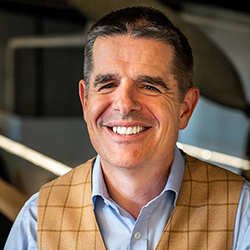Video Presentations: Friend or Foe: Wind in the Post-COVID-19 Urban Environment

Roy Denoon
Wind Engineering Consultant
Denoon Consulting LLC, Denver
In the COVID-19 world many people are reluctant to spend time in indoor spaces with people not in their family or social circles, whether this be in work or recreational environments. This has already caused major shifts in the urban environment with increased pedestrianization, added bicycle lanes, extended outdoor dining areas, etc. Owners of office buildings have started looking more closely at the addition of new outdoor spaces for working and/or recreational amenities, while owners and tenants of existing properties are looking at re-purposing, or reconfiguring, existing spaces. In the residential realm, natural ventilation of public and private space is becoming increasingly attractive.
This presentation discusses how wind affects the urban environment, both positively and negatively, with regards to different climates and users.
Guidance on how to interpret wind roses for different purposes will be given and key flow patterns around buildings illustrated in relation to different design features. This will be done with the aim of enabling overview assessments of likely wind effects, whether at ground level or higher elevations, for safety and comfort in both private and public domains.
New approaches to managing outdoor spaces in a more adaptive manner are suggested with examples of intelligent forecasting and monitoring to maximize usability. In short, there is more demand for outdoor spaces and optimizing, not necessarily reducing, the wind speeds within them, which is critical to their success, whether that be for more sustainable transportation, enjoyment of outdoor amenities, or allowing hospitality venues to operate profitably.
